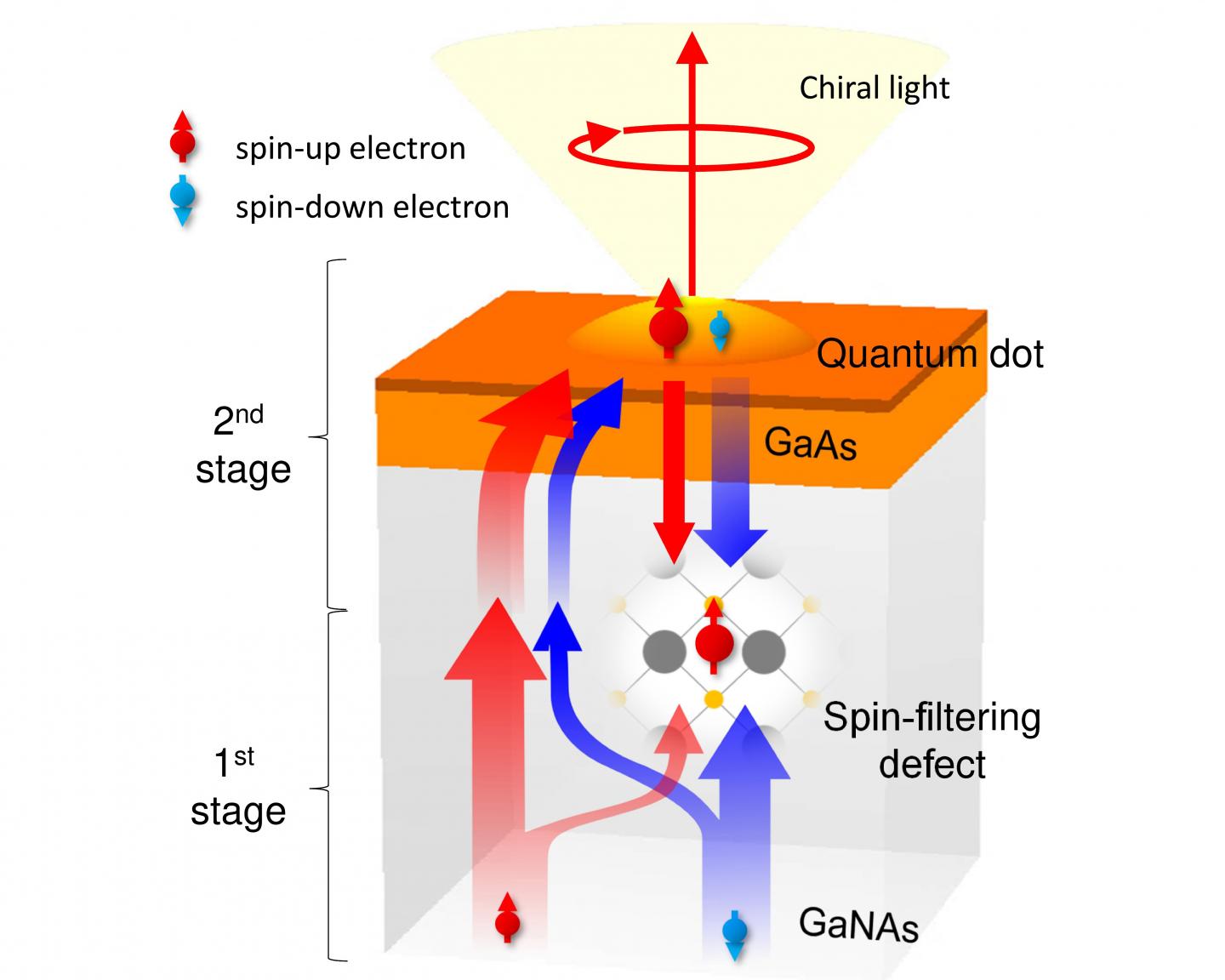Researchers achieve spin polarisation at room temperature

Opto-spintronic nanostructure made from compound semiconductor QDs achieves spin polarisation greater than 90 percent
Researchers at Linköping University, Tampere University and Hokkaido University have now achieved an electron spin polarisation at room temperature greater than 90 percent. The spin polarisation remains at a high level even up to 110degC. This technological advance is described in Nature Photonics.
A serious problem in the development of spintronics has been that electrons tend to switch and randomise their direction of spin when the temperature rises. This means that the information coded by the electron spin states is lost or becomes ambiguous. This means that for spintronis to work, electrons must be spin polarised, at room temperature and higher temperatures. Previous research has achieved a highest electron spin polarisation of around 60 percent at room temperature, untenable for large-scale practical applications.
The project, led by Weimin Chen, professor at Linköping University, Sweden, used an opto-spintronic nanostructure that the researchers constructed from layers of different compound semiconductor materials.
The struture contains nanoscale regions of quantum dots. When a spin polarised electron impinges on a quantum dot, it emits a single photon with a state (angular momentum) determined by the electron spin. Thus, quantum dots are considered to have a great potential as an interface to transfer information between electron spin and light, as will be necessary in spintronics, photonics and quantum computing. In the newly published study, the scientists show that it is possible to use an adjacent spin filter to control the electron spin of the quantum dots remotely, and at room temperature.
The quantum dots are made from InAs, and a layer of GaNAs functions as a filter of spin. A layer of GaAs is sandwiched between them. Similar structures are already being used in optoelectronic technology based on GaAs, and the researchers believe that this can make it easier to integrate spintronics with existing electronic and photonic components.
"We are looking forward to continuing this work and to unite photonics and spintronics, using a common platform for light-based and spin-based quantum technology", says Mircea Guina, head of the research team at Tampere University in Finland.
'Room-temperature electron spin polarization exceeding 90% in an opto-spintronic semiconductor nanostructure via remote spin filtering' by Yuqing Huang et al; Nature Photonics, 8 April 2021


































